k-Means algorithm
Introduction
k-Means algorithm was developed by J. MacQueen (1967) and then by J.A. Hartigan and M.A. Wong around 1975. Simply speaking k-means clustering because it is an algorithm to classify or to group your data based on attributes/features into K number of group. K is positive integer number. The grouping is done by minimizing the sum of squares of distances between data and the corresponding cluster centroid (For example: Euclidean distance).
The algorithm is composed of the following steps:
|
Example
Use k-Means and Euclidean Distance to cluster the following 8 samples into 3 clusters:
A1=(2,10), A2=(2,5), A3=(8,4), A4=(5,8), A5=(7,5), A6=(6,4), A7=(1,2), A8=(4,9)
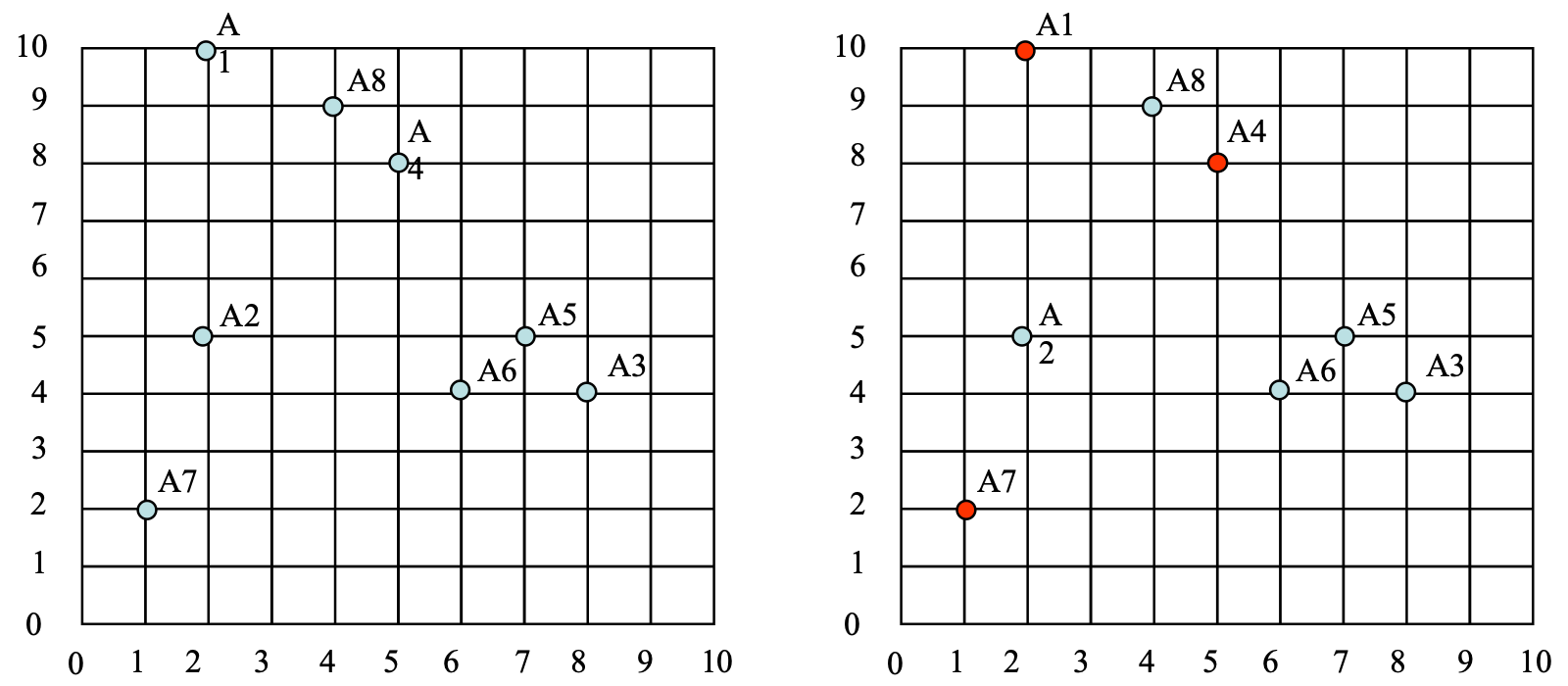
At the beginning, we initial the centre of the 3 clusters (seed1, seed2 and seed3) to A1, A4 and A7 (Figure 1 (b)).
Then, Epoch 1
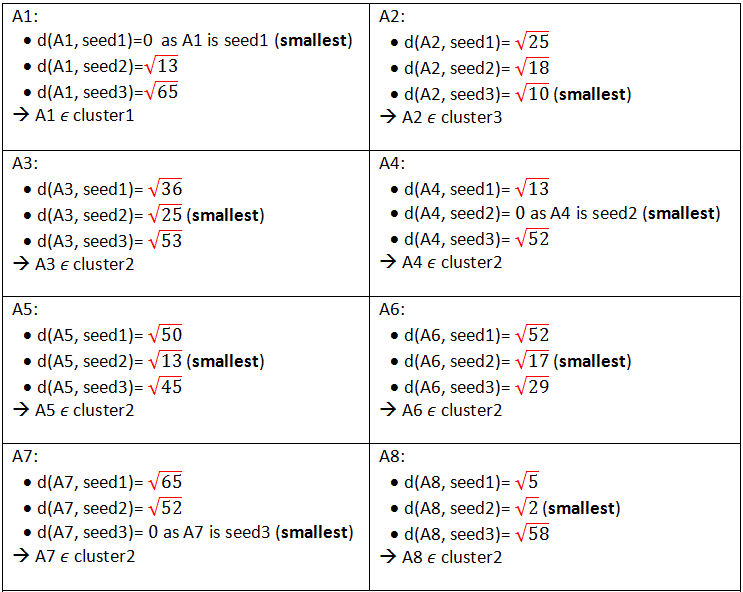
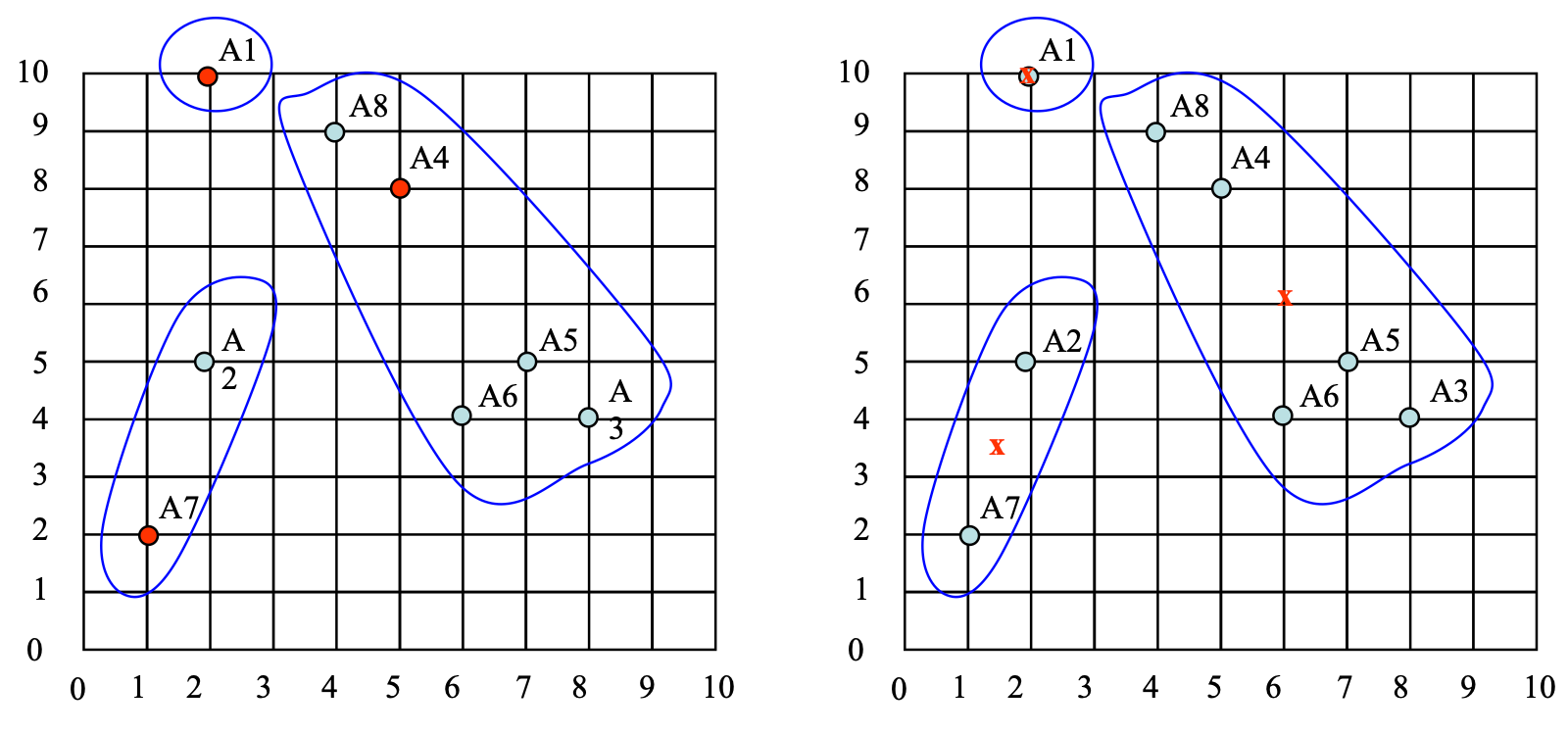
Epoch 2 (Omit), after the 2nd epoch the results would be:
1: {A1, A8}, 2: {A3, A4, A5, A6}, 3: {A2, A7} with centres C1= (3, 9.5), C2= (6.5, 5.25) and C3= (1.5, 3.5)
Epoch 3 (Omit), after the 3rd epoch the results would be:
1: {A1, A4, A8}, 2: {A3, A5, A6}, 3: {A2, A7} with centre C1= (3.66, 9), C2= (7, 4.33) and C3= (1.5, 3.5)
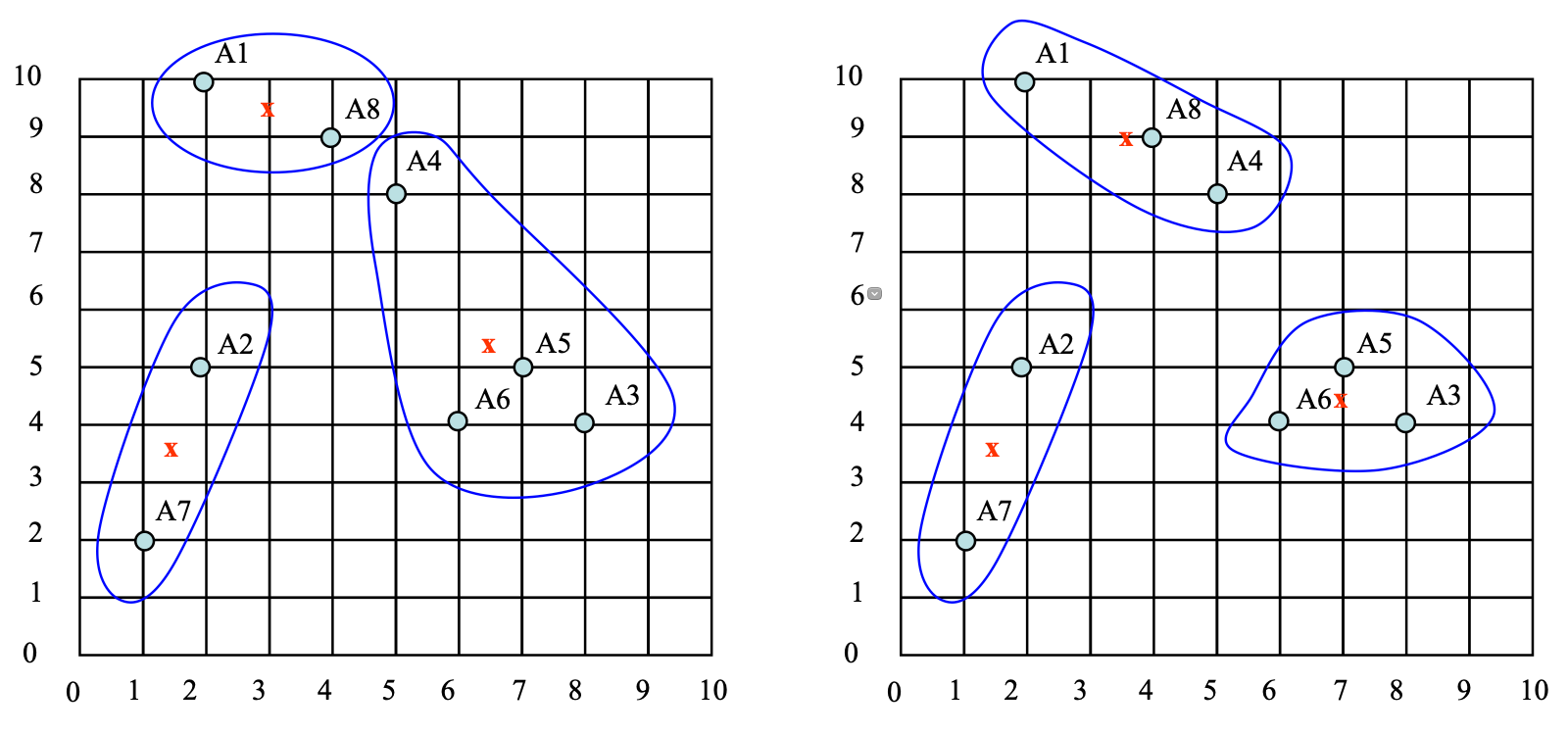
After Epoch 3, the centroids no longer move. So, the clustering is finish.
References & Resources
- N/A
Latest Post
- Dependency injection
- Directives and Pipes
- Data binding
- HTTP Get vs. Post
- Node.js is everywhere
- MongoDB root user
- Combine JavaScript and CSS
- Inline Small JavaScript and CSS
- Minify JavaScript and CSS
- Defer Parsing of JavaScript
- Prefer Async Script Loading
- Components, Bootstrap and DOM
- What is HEAD in git?
- Show the changes in Git.
- What is AngularJS 2?
- Confidence Interval for a Population Mean
- Accuracy vs. Precision
- Sampling Distribution
- Working with the Normal Distribution
- Standardized score - Z score
- Percentile
- Evaluating the Normal Distribution
- What is Nodejs? Advantages and disadvantage?
- How do I debug Nodejs applications?
- Sync directory search using fs.readdirSync
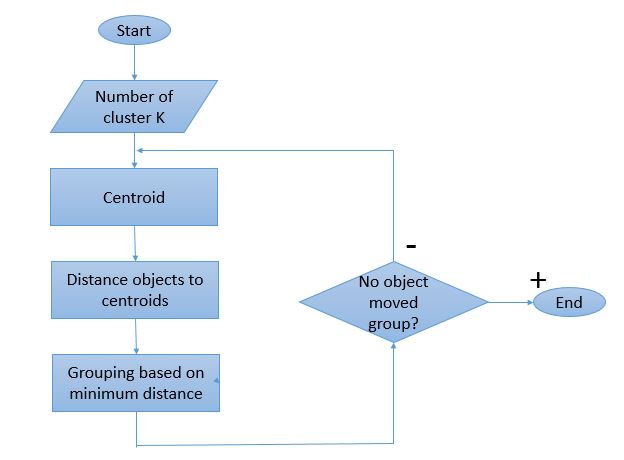 where n is the number of objects that has the closest centroid to cluster Km
where n is the number of objects that has the closest centroid to cluster Km